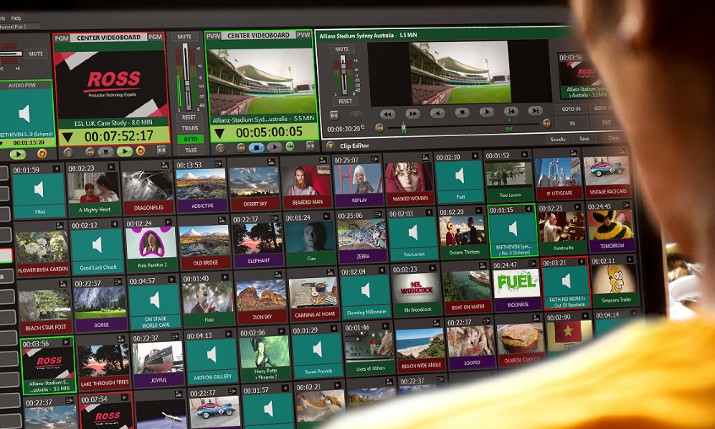Where next?: Ross Video on why remotely produced esports shows are here to stay
 By Phil Englert, BDM of global esports, Ross Video
By Phil Englert, BDM of global esports, Ross Video
We are entering a fascinating time in the esports industry as physical events have returned while remote productions continue to rise in popularity because of the global pandemic.
With COVID-19 restrictions loosening in many parts of the world, we are seeing more LAN events and new venues being built to support the pent-up demand for in-person shows. While esports fans are excited to get back to in-person events, the return to ‘normal’ has been anything but straightforward, as compliance with health and safety regulations and increasing travel costs have suddenly made hosting physical events much more expensive.
Despite these added expenses, esports production companies have persevered and are now finding ways to service the demand for in-person shows while managing inflated budgets and added logistics.
Step back and think
On the flip side of the equation, remote productions in esports are here to stay. One of the positive outcomes of the pandemic was that it gave esports professionals the time to step back and think about new areas of growth for the industry. What became clear was that there was a huge opportunity to continue to advance the esports industry by delivering broadcast-quality remote productions.
For decades, the gaming community has been connected remotely through live player-versus-player lobbies and chat software. This degree of online connection, coupled with the rise of streaming platforms like Twitch, YouTube, and Facebook Live, had already begun long before the onset of the pandemic. In many ways, the esports industry was already well-positioned to go remote from a production standpoint, and the pandemic accelerated the collective desire to enhance the remote experience.
Ultimately, the transition to 100% remote productions at the start of global lockdowns was relatively straightforward. Still, it did reveal some production gaps, as the remote production tools were not thoroughly tested to ensure that they could deliver the same caliber of production that was common in the industry pre-pandemic. Professionals in the industry scrambled to hack solutions and find ways to keep quality content on-air.
These hurdles, however, were solved quickly, and new workflows rapidly emerged. As these new production methods continued to develop and remote productions became the norm, production teams and companies settled in for this new reality.
Being a part of the ecosystem
For me, remote productions have allowed more people to compete and be a part of the esports ecosystem, as they have eliminated the need for excessive travel. This has been crucial for many competitors who have dreamed of competing at a premier level but may have been limited due to the lack of resources to hop on a plane and travel to competitions and events.
The counter to the remote production argument is that this model may ultimately end up hurting large facilities. While this is a legitimate concern shared by many esports venues, one thing I have witnessed of late is the emergence of a new hybrid model. This approach uses remote qualifying rounds to save costs, resulting in more resources allocated to in-person flagship Finals and Championship events. This model is not only more inclusive but also creates a more immersive experience for the fans and players at flagship events.
Another consequence of the rise of remote productions is that in-person venues, studios, arenas, and game centers are creating new experiences for visitors. For example, there are now arcade-style esports lounges that are primarily designed as social spaces. There are also multipurpose esports facilities featuring rentable extended reality stages and creative studio spaces that offer additional sources of revenue for esports facility owners. There are also more and more education facilities popping up as collegiate esports programs become more commonplace. Despite these innovative physical esports spaces, the meteoric rise of remote productions has left people asking whether in-person events are still worth it.
In my humble opinion, both in-person and remote events are essential for the growth of the esports industry. In-person events provide the visceral feeling of connection with other gamers and fans. They also have some of the most cutting edge set designs, which provide attendees with a live entertainment experience like no other. The different experiences provided by remote and in-person events serve a valuable place in the esports industry.
It will be interesting to see the balance between the number of in-person events and remote shows. The next couple of years will be filled with hybrid event models as people grapple with how to continue to grow the industry in a brave new world.
One simple fact remains; despite all the change within the industry over the last two years, esports continues to grow and gain momentum. I, for one, do not doubt that this trend will continue as esports grows through the combination of physical and remote events.
